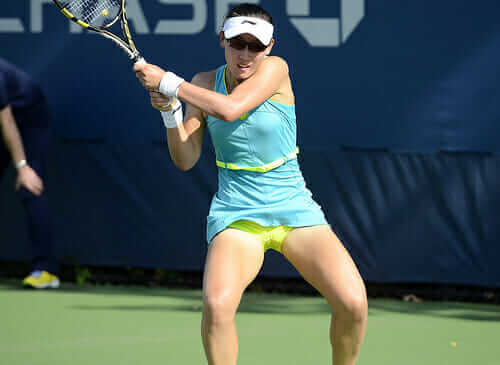Tennis knee pain. Usually when we think of physical problems from tennis, we usually think of injuries to the elbow or wrist, but the knee can be affected just as easily.
Tennis puts a great deal of stress on the knees as you run and jump during the game. You will also be tending to twist your body while holding your feet stationary, which is one of the ‘best’ ways to cause damage to this joint.
Bursitis of the Knee
Our joints, tendons, ligaments, and bones are protected from injury by little fluid filled pads called bursa. When you’re playing tennis and land hard after a jump, it’s the bursa pads in your knee that help keep the bones of the knee from rubbing together.
Unfortunately, these pads can become damaged or can even rupture from hard use such as a sharp blow, repetitive movement, and falls. You will begin to suspect that something has gone wrong with the bursa in your knee when these symptoms begin to appear:
- Restricted knee movement.
- Swelling around and above the kneecap.
- Pain both when the knee is in motion and at rest.
- The area around the kneecap will feel warm to the touch and will appear inflamed.
Treating tennis knee pain will consist of evaluation, rest, and rehabilitation that can involve physical and massage therapy.
Exercises designed to keep the thigh muscles stronger and more flexible can help to prevent further attacks of bursitis, as well as pacing yourself when playing tennis to take breaks between games.
Meniscus Tears
It’s easiest to picture the meniscus as crescent-shaped pads that help cushion the bones of the thigh and the lower leg from one another.
Each of your knees has two of these pads, which are made up of fibrous cartilage. These meniscus pads work to absorb shocks, increase flexibility, and help you with rotational movements.
Unfortunately, the meniscus pads are subject to tearing, and this can occur easily when playing tennis as you twist and turn to return the ball. You can tear your meniscus pads in three ways:
- A longitudinal tear travels along the ‘grain’ of the fibers.
- A radial tear rips right across the meniscus pad.
- An oblique tear begins at the inside of the pad and travels at an angle towards the outside.
You will usually be aware of a meniscus tear as soon as it happens; this is not a subtle injury. While a small tear may only cause minor pain, moderate or severe tears will cause extreme amounts of pain and swelling, which impair movement and can prevent you from straightening your leg.
Naturally, the first step in treating a meniscus tear is to use PRICE (protection, rest, ice, compression, and elevation).
If the symptoms are severe a trip to the doctor will be necessary as may be physical therapy. Massage therapy can also help with a meniscus tear, especially by stimulating blood flow to the meniscus pads, which normally have a rather limited blood supply.
Tendonitis of the Kneecap
The tendon which connects your kneecap to your shinbone is called the patella tendon, and injury to this tendon can result in patellar tendonitis. This condition is also known as ‘jumper’s knee’, and from this name it’s easy to see how tennis players can suffer from this injury.
Tennis involves a great deal of fast moves, twists, and jumps, all of which can put strain upon the knee, which can include damage to the patella tendon. Patellar tendonitis can be a progressive condition:
- To begin with, you may only notice a bit of discomfort while playing tennis.
- The pain may become so bad that it makes it difficult for you to play.
- The tendonitis finally causes pain during ordinary activities.
Treatment, of course, will depend upon the severity of the tendonitis: cases caught early, or perhaps not too bad to begin with will usually respond in a couple of weeks to rest; more damaging injuries to the tendon may require medical intervention, including cortisone shots and physical therapy. Extreme cases will need surgical treatment.
Massage by a professional therapist can have a positive outcome when treating jumper’s knee.
Not only will blood flow be increased to the damaged tendon, but excess fluids will drain off and relieve swelling to reduce pain.
Your therapist will not only massage the tendon itself, but the thigh muscles to increase their flexibility and so provide more support for the knee.
